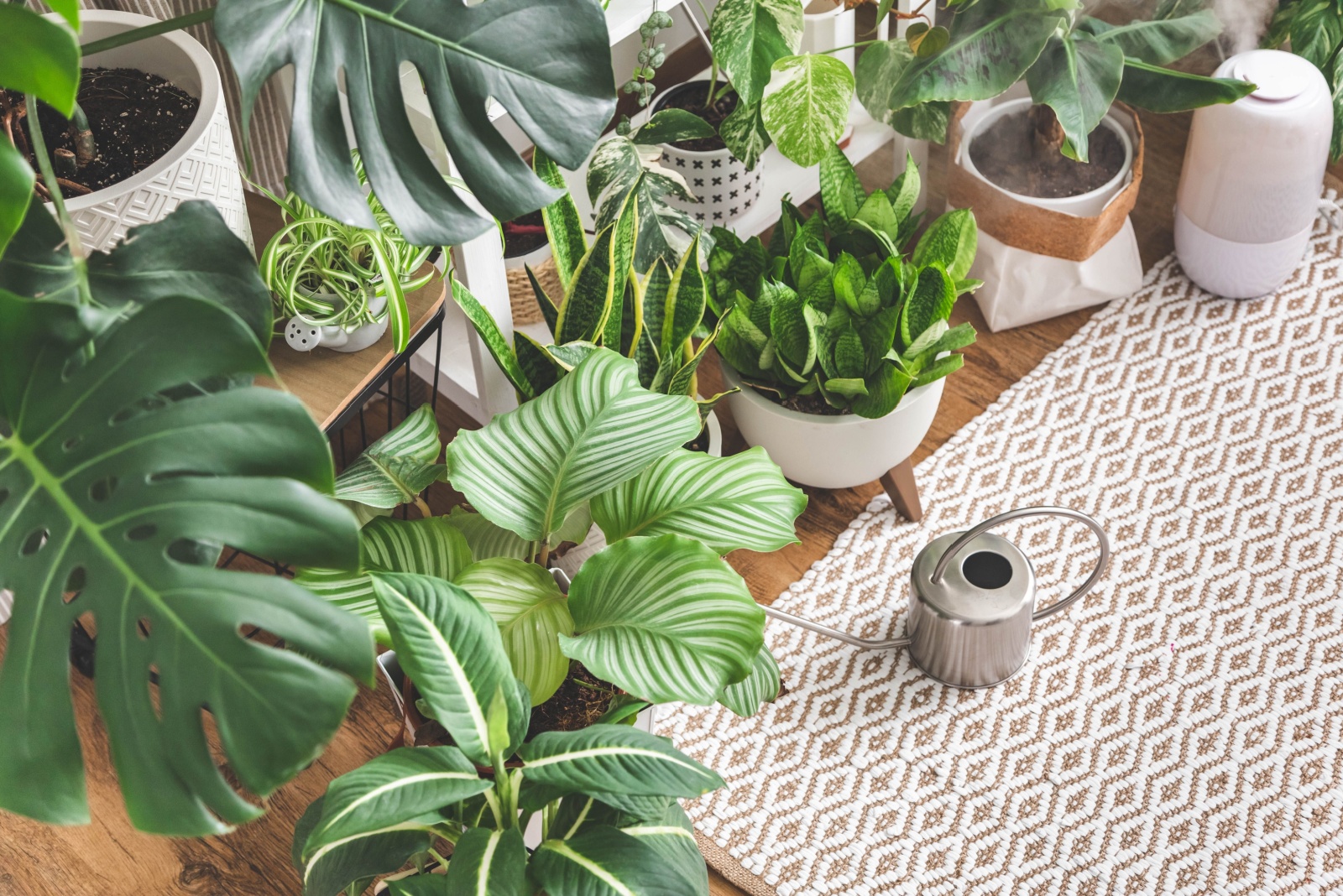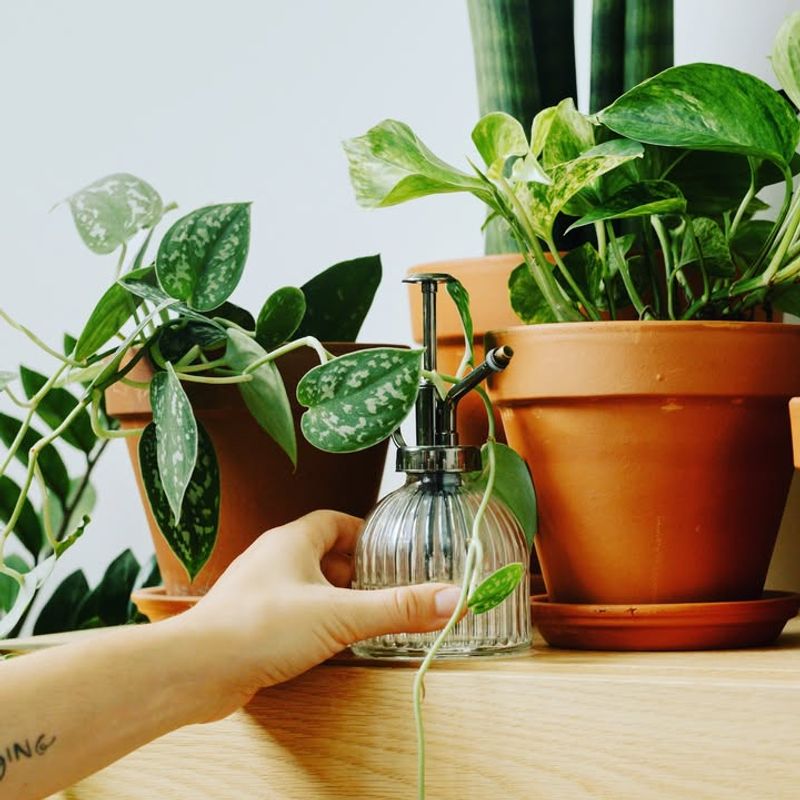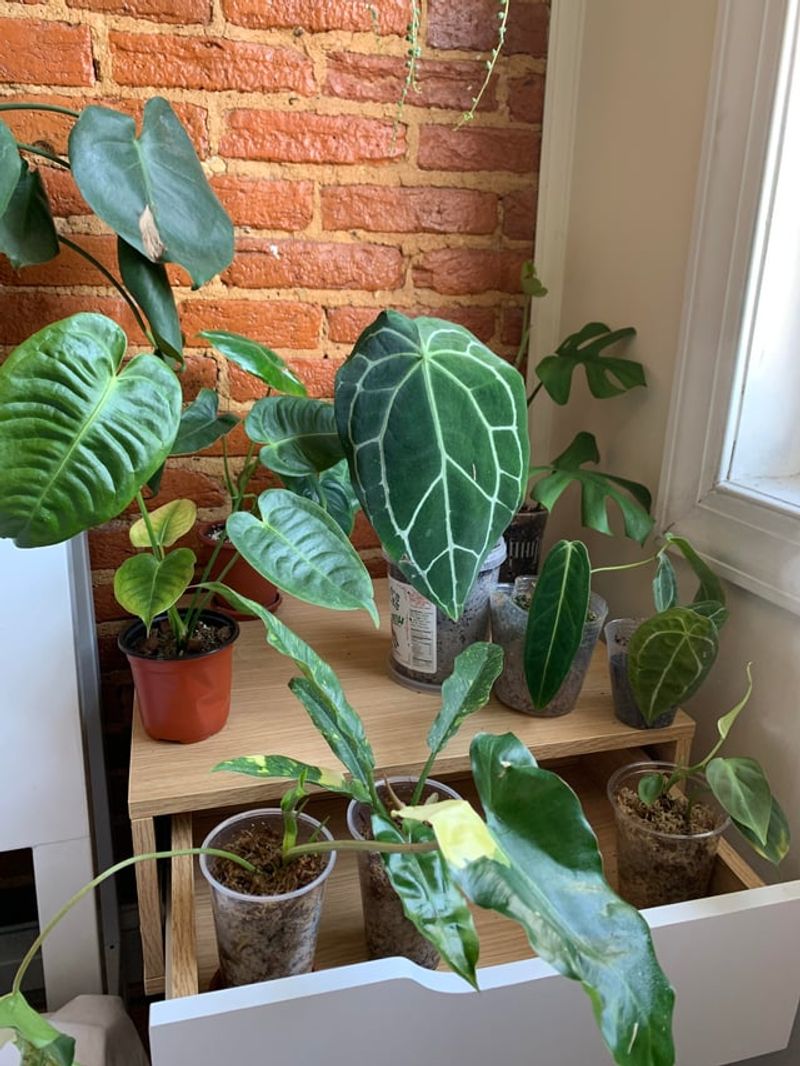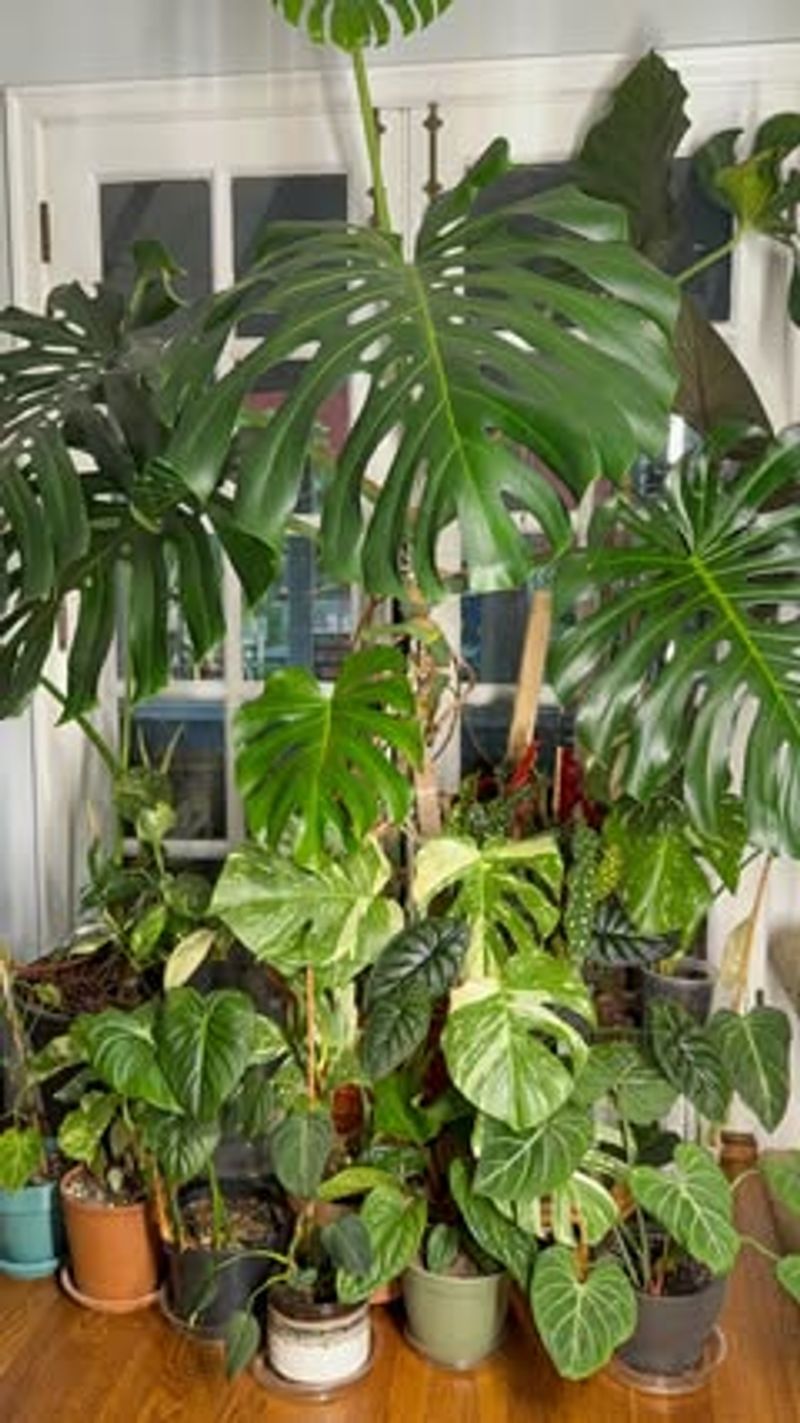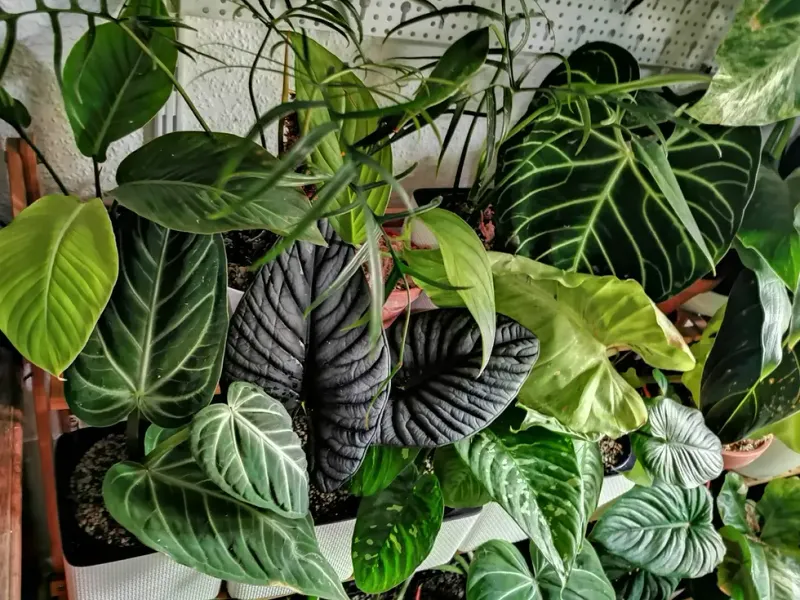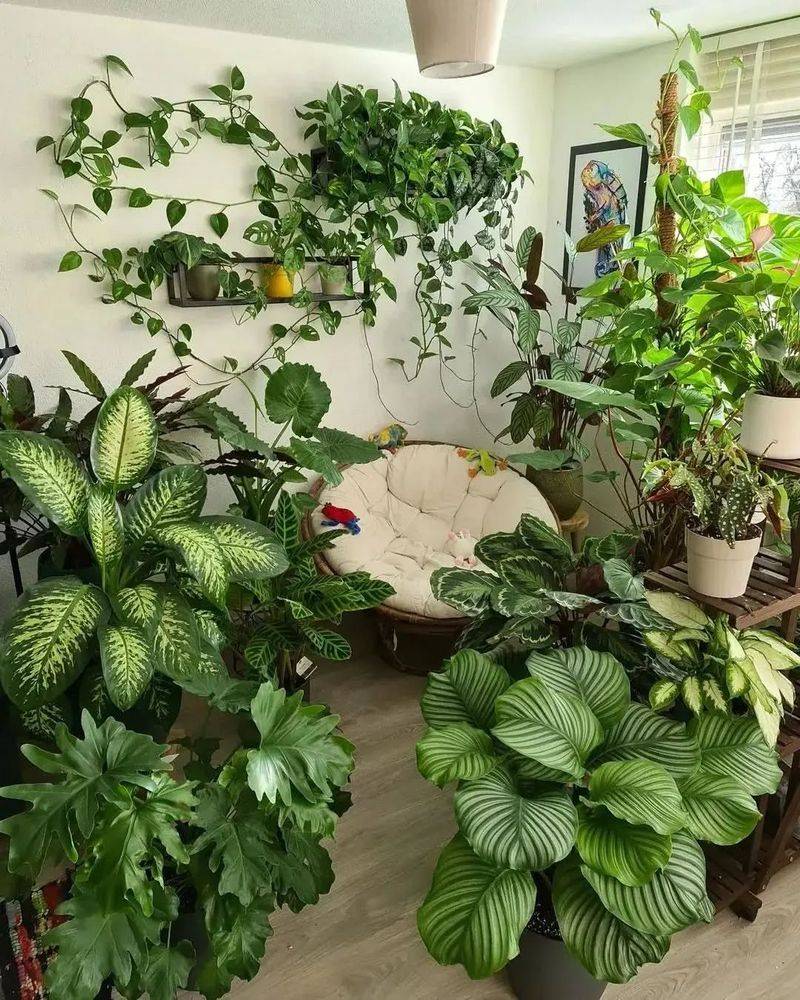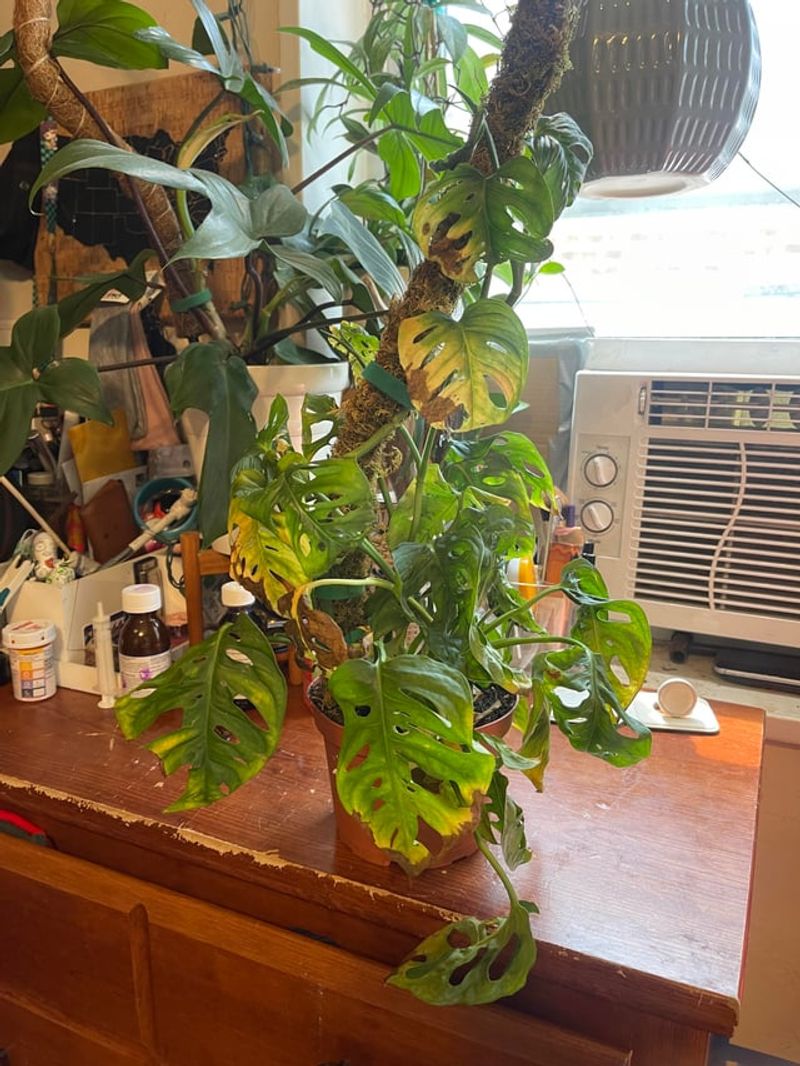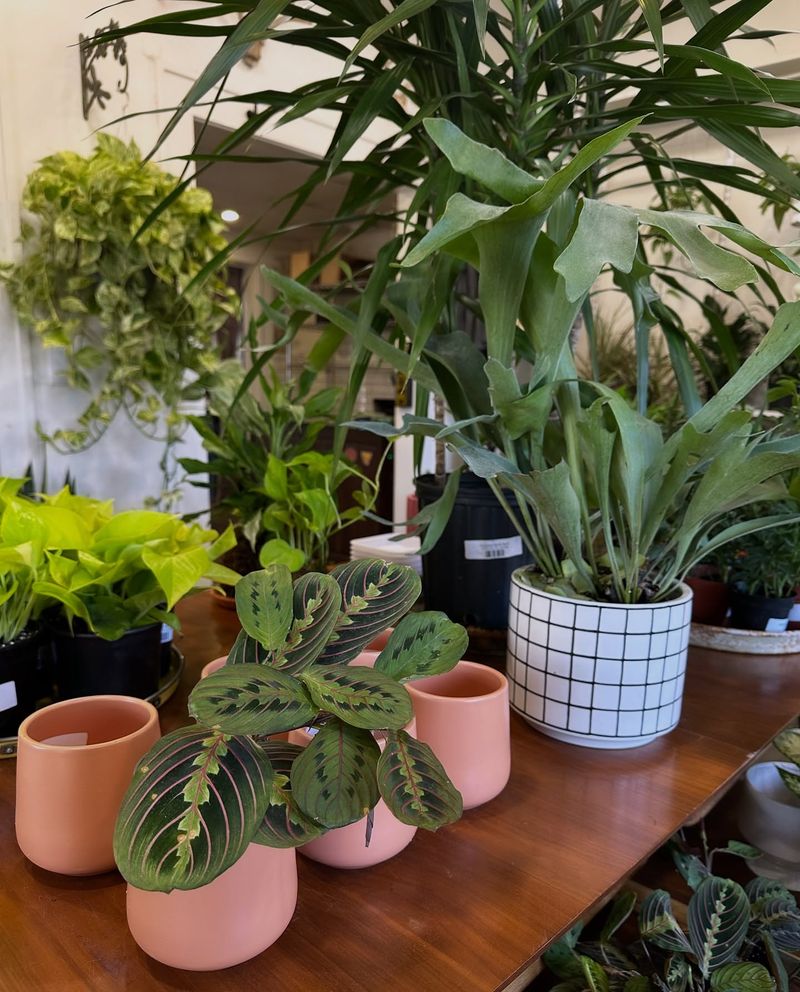Growing houseplants in Florida comes with its own quirks, and leaf spacing is one of them. It might seem harmless when leaves touch, but a little breathing room goes a long way.
Proper spacing helps prevent pests, encourages airflow, and keeps humidity in check. Crowded plants are more likely to struggle, especially in Florida’s warm, damp climate.
I’ve found that giving each plant its own space makes them thrive. It’s a small adjustment that leads to healthier, happier greenery indoors.
1. Pests Travel Fast Between Touching Plants
When leaves brush against each other, bugs can move from one plant to another without much effort. Spider mites, aphids, and mealybugs love this setup because it gives them an easy highway to spread.
Florida’s warm, humid climate already makes indoor gardens a paradise for pests. If one plant gets infested, touching neighbors become vulnerable almost instantly.
Keeping a few inches of space between pots helps you catch problems early and treat them before they become a full-blown nightmare.
2. Air Circulation Keeps Fungal Problems Away
Good airflow around your plants prevents moisture from sitting too long on leaves, which can invite mold and fungal diseases. Crowded plants trap humidity, creating the perfect breeding ground for trouble.
In Florida, where indoor humidity can climb quickly, this becomes even more important. A little breathing room lets air move freely, drying out surfaces faster and reducing disease risk.
Think of spacing as giving each plant its own personal bubble—a simple way to keep everyone healthier.
3. Light Reaches Every Leaf More Evenly
Plants need light on all sides to grow balanced and strong. When they’re crammed together, some leaves get shaded out while others hog all the sunshine.
This uneven exposure can cause leggy growth, yellowing, or weak spots that make plants more prone to stress. Florida gardeners know that even bright indoor light can be tricky to distribute well.
Spacing your collection thoughtfully ensures every plant gets its fair share, leading to fuller, happier foliage all around.
4. Root Systems Need Room To Breathe Too
It’s not just about what’s happening above the soil—roots matter too. Pots placed too close can limit airflow around the drainage holes, trapping excess moisture and encouraging root rot.
Florida’s humidity means soil takes longer to dry out, so proper spacing helps pots breathe and water evaporate at a healthy pace. Roots stay healthier when they’re not sitting in stagnant, damp conditions.
A little space goes a long way in preventing soggy soil disasters that can kill even the toughest houseplants.
5. Easier Maintenance And Monitoring For You
When plants aren’t tangled together, you can actually see what’s going on. Checking for pests, yellowing leaves, or watering needs becomes much simpler when you don’t have to dig through a jungle.
Florida plant lovers know that regular monitoring is key to catching issues before they spiral. Spaced-out plants let you water each one according to its needs without splashing neighbors or missing hidden problem spots.
Plus, it just looks better—a tidy, organized collection is easier to enjoy and care for long-term.
6. Moisture Gets Trapped Where Leaves Meet
Florida’s sticky, humid air means moisture clings to everything, especially your houseplants. When leaves overlap or press against each other, that dampness gets stuck between them with nowhere to go. Think of it like wearing wet socks inside plastic bags—uncomfortable and asking for trouble!
Trapped moisture creates the perfect environment for mold, mildew, and bacterial spots to develop. Your plants need breathing room so air can flow around each leaf and dry things out naturally.
Giving them space is especially important during Florida’s rainy summer months when indoor humidity climbs even higher. Check your plants regularly and adjust their positions if you notice leaves staying wet for too long.
7. Competition For Resources Weakens Growth
Plants might look peaceful sitting side by side, but underneath they’re actually competing for survival resources. When houseplants crowd together, their leaves block each other from getting enough sunlight, which they desperately need for making food through photosynthesis.
Some leaves end up shaded and weak while others hog all the brightness. Their roots also battle underground for water and nutrients in the soil. This competition means none of your plants grow as strong or vibrant as they could with proper spacing.
You might notice slower growth, smaller leaves, or pale coloring when plants fight for resources. Give each plant enough personal space to stretch out and thrive independently for the best results.

